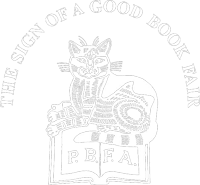With decorations by Ricketts.
SILURIST, Henry Vaughan; Charles RICKETTS [Illus.] ~ The Sacred Poems.
LIMITED EDITION. Hacon & Ricketts, London: 1897.
Crown 8vo., publisher's grey paper-covered boards with printed label to upper cover and spine, featuring a floral device by Ricketts; outer edges untrimmed; with double-page wood-engraved frontispiece, along with numerous other initials and ornaments throughout; THE BOOK with some rubbing along spine and bumping to corners, a little of the webbing showing through; some dirt marks and darkening to covers; a touch chipped to edges of spine label; endpapers faintly offset; the odd spot throughout but for the most part clean and fine internally. The book is protected in a removable mylar cover. Limited edition, one of just 210 copies on heavy handmade Arnold's laid paper with the Vale Press watermark, printed in Vale type, with colophon set in a cross shape stating: "Printed at the Ballantyne Press under the supervision of C. S. Ricketts the designer & engraver of the decorations." Henry Vaughan (1621–1695) was a Welsh metaphysical poet and medical physician. Born in the county of Brecon, his twin brother, Thomas, went on to become a Philosopher and Alchemist. The family came from a background of both Catholic and Protestant families and as such, both Henry and his brother were raised in a strongly religious setting. He studied at Jesus College, Oxford, and later served as a secretary to Sir Marmaduke Lloyd during the Civil War. He went on to practice medicine, and began to write both secular and sacred poetry, adopting the descriptive name 'Silurist' in a homage to the Silures, a Celtic tribe of pre-Roman south Wales that strongly resisted the Romans. While his secular works focused on his love of the countryside and his experiences during the Civil War, it is his religious verses which are best known today. Many of his works focus on the idea of death, regeneration, and rebirth, inspired by a bout of sickness in which he came close to dying, and he adopted the saying "Moriendo, revixi" – 'by dying, I gain new life'. Ricketts (1866-1931) was an artist, illustrator, author and printer, but he is best known today for his work as a book designer. It was while he was working with the lithographer Charles Shannon that he met the Barrister William Llewellyn Hacon, a rich man who invested £1,000 in their Vale Press, and Hacon later became Ricketts's business partner in the firm. When a fire in 1904 destroyed the press's woodcuts, the Vale Press closed, and the Vale Press type was famously thrown into the river. Ricketts was a non-believer, but frequently used the figure of Christ in his own artworks and was fascinated by the concept of religion within art and the human experience. In his 'Bibliography of the Books issued by Hacon & Ricketts', Ricketts elaborates: "Being a selection, the original spelling being retained. Edited by Charles Ricketts. With a frontispiece and border and initials designed and engraved by him... Two hundred and ten copies printed at fifteen shillings. The border made of honeysuckle petals was not used again. Note the cruciform colophon". A very handsome copy of the eleventh Vale Press printing.
BINDING: Hardcover
CONDITION: Very Good +
£950



